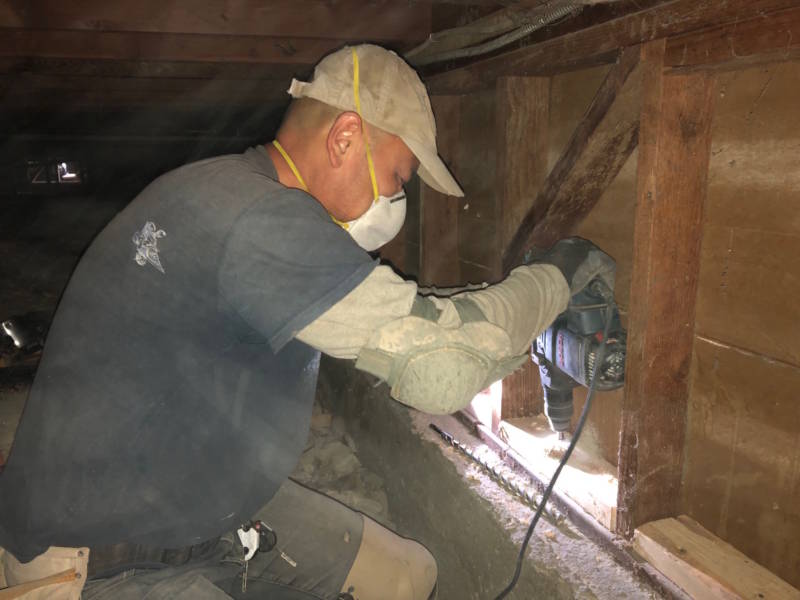Homeowners waiting for retrofits under the state’s Earthquake Brace and Bolt program are stuck in limbo while federal funding for this year’s program is tied up in red tape. That has put thousands of planned retrofits on hold.
Thousands of California Homeowners Waiting on FEMA for Seismic Retrofits

Every year, the California Earthquake Authority holds a lottery and doles out grants of up to $3,000 for homeowners to have their houses retrofitted for earthquakes.
The program, which started in 2014, has been mostly financed by the California Earthquake Authority’s Loss Mitigation Fund, but this year officials were counting on the Federal Emergency Management Agency to bankroll at least half, and possibly all of the $6 million program.
“We’re still waiting,” says Glenn Pomeroy, CEO of the California Earthquake Authority, the same agency that underwrites earthquake insurance for homeowners. He says FEMA wants to see floor plans, which most homeowners don’t have on hand, or schedule site inspections to ensure that the work won’t affect any historical value the house might have.
To Pomeroy, that seems like a stretch. Typically contractors go into the basement or crawlspace of a home, run steel bolts through the bottom layer of framing into the foundation, and then nail plywood to the inside framing to add shear strength.
“It’s invisible from the outside, but it dramatically reduces the chances of that home sliding off the foundation,” says Pomeroy.
Some homes in the program date back to the 19th Century, but many were built as recently as 1979.
“We’re preserving historic homes, not interfering with them,” says Pomeroy, “and it frankly just doesn’t make sense to me that there’s this holdup in releasing these funds.”
The federal cash was money due from a presidential disaster declaration after the punishing winter storms of 2017. But because of the tangle of red tape, retrofits for the 2,000 homeowners already approved for the program have been on hold for about four months.
“Someone who’s been told that they’ve been selected for the program, I don’t blame them for being frustrated,” says Pomeroy. “We were hoping that we’d be providing the reimbursements for people to be retrofitting their homes already by now.”
But FEMA is bound by the National Historic Preservation Act to do the reviews before releasing any money, says agency spokesman Frank Mansell. The process, he admits, isn’t ideal in this case, as it appears the retrofits would have to be approved and funded one house at a time.
“This, as you can imagine, given the number of structures involved, is unwieldy at best,” he says.
The state’s Office of Historic Preservation is in talks with federal officials to find some kind of shortcut, which ostensibly could be in place sometime in May.
“I think we’re really close, that’s the good news,” says Julianne Polanco, the state historic preservation officer.
“We’re trying to understand a way to meet everybody’s goal, which is to give the money out to people to brace and bolt their buildings, while making sure that the federal law, as we’ve been given, is met.”
Polanco says she’s hopeful that won’t mean individual site surveys of every house.
“It’s whatever means possible to determine the effects on a historic property,” she says.
Tired of waiting, the state has developed a partial workaround. CEA will use state money to get the program rolling while the FEMA funds remain tied up. But it will only cover about half the retrofits planned for this year.
“As bureaucratic as that sounds,” says Polanco, “we are working and have been working together very diligently to come up with a solution that can meet all masters and ultimately lead to those buildings being repaired and people can be that much safer.”
